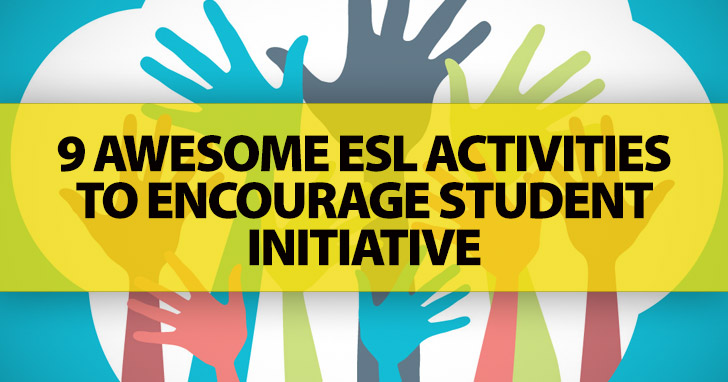Managing student participation is a big deal in the ESL classroom, and maximizing it is no easy task.
Many of our ESL students are even reluctant to participate. They are perfectly content with answering yes or no and just sitting there quietly. But let's get real, they are not going to learn like that, at least not to use the language. Using the target language as much as possible is the key to learning any language. The activities we build into our lessons fit our lesson topics and goals. The objective of these activities is for students to learn to use the language and to interact in ways that will help them in real life. It is important to include a good variety of activities to suit the situations your students will be in outside the classroom. These activities have to focus on the transactional use of the language, where the goal is to make social connections. No matter how hard your students work, they are not going to do it on their own. Put the ball in their court and make them sweat a little. Do you want to know how? Take a look at these great student initiative activities.

Practice Interactions
-
Practicing interactions is an all time favorite activity when you want your students to become familiar with real life social exchanges. Interacting with others is a natural part of social life and because of that, they are a natural choice when you want your ESL students to practice absolutely anything from vocabulary to language functions to structures. There are different types of interactive activities you can use in your lessons. Let's take a look at a few.
-
1
Role Plays
Role plays give students opportunities to communicate within near-to authentic situations. They can take a considerable amount of class time, so it is important to plan ahead and also to make sure your students know what they need to do. In role plays the situations need to be set up by the teacher, but it is the students who need to make all the choices. Some examples are:
- Setting up meetings
- Making travel arrangements
- Talking about oneself in a social event
- Ordering meals.
- Giving instructions. Etc
-
2
Basic Exchanges
Short exchanges are also popular and much more common. They usually require a lot less time but these exchanges don't give students much freedom since it is the teacher who tells students what to say. These are a good choice when you want your students to practice language functions. Look at the following example.
A: Hi, how are you. I'm Mike.
B: Hi Mike, I'm Maria.In this example they are practicing greetings but the list goes on and on.

Make Use of Descriptions
-
Descriptions are activities without any kind of interaction. Here students are given instructions to talk about or describe something. The objective is for them to go over specific language goals already covered. Of course preparation is needed in advance, no matter what the student’s level is. If the students are beginners, a model could be provided by the teacher. If students are in higher levels, you can just say: “talk to me about this situation/ the picture in your book”. Let's take a look at some great activities.
-
3
Describing Things
The student can describe objects in the classroom or in their office while others guess what those objects are.
-
4
Describing Sequences
You provide picture sequences of a situation. There are two options here. They can simply talk about the sequences frame by frame to describe the situation or you can cut out the frames and have them put them in order first and describe them later.
-
5
Using Questions
Ask them questions to lead them into a description. For instance: What do you do in the morning? What did you do in your last vacation? What would you do if you were asked to relocate?
-
6
Describing Articles
Cut out headlines from the paper. They need to be related to the topic you are working on, of course. Give each student a headline and ask them to tell you what they think that article is about.

Apply Questions
-
We have already cover this topic in other articles but let's go over some things again. Questions are of utmost importance for students. In real life they will also need to ask questions, not only answer them. Through questions ESL students understand how auxiliaries work and how to use them. There are many different types of activities you can use to practice questions. Let's take a look at some.
-
7
Asking about Pictures
Show your students a picture and have them ask you or other students questions about it.
-
8
Asking Classmates
Point to one of the students and say, “Diego had party last week. Ask him about it”. Have the other students ask “Diego” about the party.
Don't let your students get lazy.
Combine different types of activities and provide meaningful contexts for each. Remind them that hard work pays off.
P.S. If you enjoyed this article, please help spread it by clicking one of those sharing buttons below. And if you are interested in more, you should follow our Facebook page where we share more about creative, non-boring ways to teach English.







